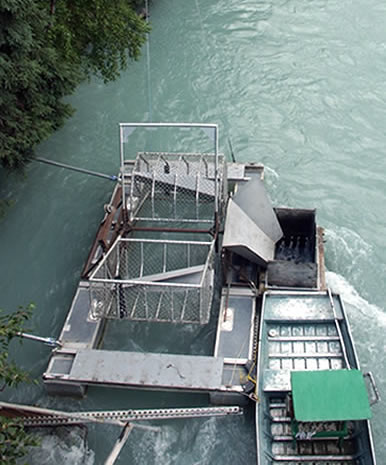
Kasilof River
Other Tools
Other Tools

Estimating the abundance of a particular species of salmon in a river is easiest when they are not mixed with other fish species. Since sonar cannot identify fish by species, almost all ADF&G sonar sites run either a gillnet project or fish wheel to separate sonar-detected fish by species. The Kasilof River sonar site uses a fish wheel. A fish wheel captures fish by scooping them out of the river with large baskets and depositing them into a live box. The relative proportion of sockeye salmon to other species caught in the fish wheel is then examined to determine how many of the sonar-detected fish should be counted as sockeye salmon.
Most of the time, more than 95 percent of the fish migrating into the Kasilof River are sockeye salmon and the sonar-detected fish can all be counted as sockeye without using the fish wheel to separate them by species. The sonar site only uses the fish wheel to separate fish by species when large runs of pink salmon enter the river during even-numbered years and toward the end of the sockeye run.
Even when the sonar site does not need fish wheel catches to separate sonar-detected fish by species, ADF&G runs the fish wheel every day to collect data from sockeye salmon. ADF&G technicians collect sex and length data, and scale samples from the fish. ADF&G biologists use the scale samples to determine the age of the fish and use this and the length and sex data to identify trends in returning sockeye salmon runs from year to year.
